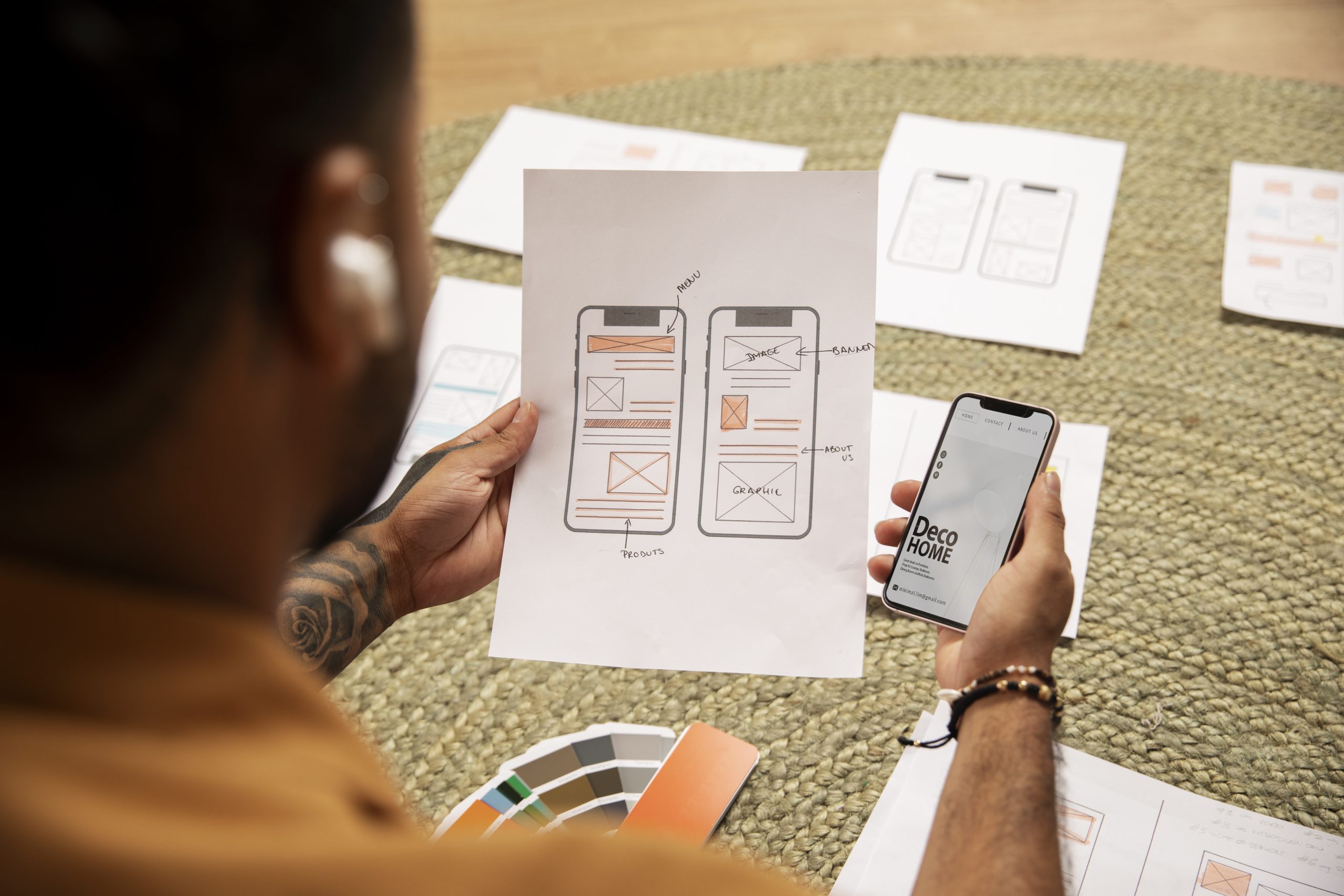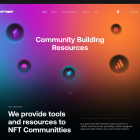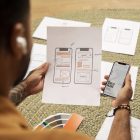Understanding why UX is important for business begins with recognizing that UX design is the art of creating products that provide meaningful and relevant experiences to users [1]. It focuses on enhancing user satisfaction by addressing customer expectations and ensuring the digital products are visually appealing and straightforward to use [2]. This foundational approach not only meets but anticipates the needs and pains of the target audience, paving the path towards brand loyalty and user retention [1][2]. In today’s competitive digital landscape, the quality of a business’s UX/UI design can significantly impact its brand reputation and ability to maintain a competitive edge [2]. By prioritizing why user experience is important and incorporating key elements of UX and UI design, businesses can foster a more inclusive and engaging user interaction, ultimately influencing conversion rates and growth within their digital strategies [1][2].
The Vital Role of UX/UI Design in Enhancing User Satisfaction and Retention
UI design significantly influences the initial user interaction by focusing on the product’s aesthetics and functionality, which are crucial for making a positive first impression. A well-executed UI design can prevent user frustration and dissatisfaction [3]. Consistency in UI elements and familiarity with design patterns enhance ease of use and user confidence, increasing overall satisfaction [4]. Moreover, intuitive navigation systems are essential as they minimize confusion and enhance user experience by making information retrieval straightforward and hassle-free [5]
Enhancing User Experience Through Design
Responsive design plays a pivotal role in user satisfaction by ensuring that applications function seamlessly across various devices and screen sizes, which is fundamental in today’s mobile-first world [6]. Simplifying the onboarding process can significantly affect how new users perceive a product, encouraging continued use and fostering loyalty [7]. Furthermore, engaging users with interactive elements and gamification can lead to increased user engagement and lower rates of abandonment [8].
Strategic UI/UX Implementation for Business Success
Effective use of design elements like white space, color, and typography not only enhances the visual appeal but also improves readability and user interaction [9]. Streamlined navigation and well-organized information architecture help users find the necessary information quickly, improving satisfaction and retention rates [10]. Clear calls to action guide users towards desired behaviors, such as signing up or making a purchase, which are crucial for business conversions [11]. Businesses that invest in superior UI/UX design not only differentiate themselves from competitors but also see enhanced customer satisfaction and loyalty, which are directly linked to increased profitability and reduced customer acquisition costs [12][13]. By continuously informing users about updates and new features, companies can maintain user interest and foster ongoing loyalty [14]. In essence, exceptional UX design is not just about attracting new users but also about retaining existing ones, thereby sustaining business growth and success [15][16][17].
Impacts of UX/UI Design on Brand Reputation and Competitive Edge
Establishing Brand Credibility and Trust
A well-designed UX/UI instills confidence in users by ensuring a consistent and intuitive experience across all platforms, which is essential for establishing brand credibility and trust [9]. Companies that prioritize a seamless user interface demonstrate to their customers that they value their time and needs, which is pivotal in building a reliable brand image [9]
Enhancing Brand Differentiation and Market Leadership
Investing in UX/UI design allows businesses to differentiate themselves from competitors and potentially lead the market [12]. By delivering unique and engaging product experiences, companies can stand out and capture the attention of their target audience, which is crucial in competitive industries [12][13]. Furthermore, continuous innovation in UX/UI design can attract tech-savvy consumers and position a company as a forward-thinking leader [10]
Driving User Decisions and Brand Loyalty
Design elements significantly influence first impressions, with 94% of such impressions being design-related [8]. A mobile-optimized interface increases the likelihood of purchase by 67%, demonstrating the direct impact of UX on consumer decision-making processes [8]. Additionally, 73% of customers consider their experience as a key factor in their purchasing decisions, and 43% are willing to spend more for a superior experience [8]. This highlights the direct correlation between effective UX/UI design and enhanced brand loyalty and customer retention [3].
Amplifying Brand Reach through User Engagement
A well-crafted UI not only facilitates user interaction but also makes it easier for satisfied customers to share their positive experiences on social media [10]. This amplifies a brand’s reach and enhances its reputation, as user-generated content is highly trusted and can influence potential customers [10]. Brands that are transparent and communicate their values clearly through their UX/UI design are perceived as honest and reliable, further enhancing customer loyalty and trust [10].
Strategic Impact on Revenue and Market Position
Companies that excel in UX/UI design have been shown to outperform their peers in terms of revenue and shareholder returns [11]. Effective UX/UI design not only improves user satisfaction but also drives conversion rates, reduces user errors, and enhances brand loyalty, all of which contribute to a stronger market position and higher profitability [3][11].
How UX/UI Design Influences Conversion Rates and Business Growth
Boosting Conversion Rates through UX/UI Design
Enhanced User Experience and Conversion Rates
A well-designed UX significantly improves conversion rates, with studies showing increases up to 400% [8]. The design of user interfaces that guide users smoothly through the conversion funnel, featuring compelling calls-to-action and simplified checkout processes, is crucial for maximizing conversions [9]. Additionally, streamlining the user experience translates directly into increased revenue and business growth [9].
Strategic Design Elements Impacting User Behavior
First impressions are critical, and a visually appealing UI design instills trust and credibility, which are essential for higher conversion rates [10]. Effective UI design also includes user-friendly navigation and flow, ensuring that users can easily find what they are looking for, which enhances their overall experience and likelihood to convert [10]. Moreover, reducing friction and cognitive load through clear error messages and a logical sequence of steps can significantly ease the user’s journey, increasing the likelihood of conversion[10]
Mobile Responsiveness and Emotional Engagement
Responsive design ensures that websites and apps function seamlessly across different devices, which is crucial for capturing the mobile user market and improving conversion rates [10]. Emotional engagement is also key, as UI/UX design that evokes positive emotions can forge a stronger connection between the brand and the user, encouraging trust and conversions [10]
Optimizing Conversion Through A/B Testing and Iterative Design
A/B testing and iterative design are effective strategies for refining UI/UX to optimize conversion rates. By continuously testing and adjusting design elements based on user feedback and behavior, businesses can create highly effective user interfaces that drive conversions [10].
Visual Consistency and Clear CTAs
Maintaining visual consistency through typography, color choice, and layout helps in retaining user attention and guiding them towards conversion points. Clear and strategically placed CTAs are crucial for directing users towards taking desired actions, such as making a purchase or signing up for a newsletter [10].
Leveraging User Reviews and Simplifying Processes
Customer reviews and testimonials play a significant role in influencing new users’ purchase decisions. Ensuring these elements are well-integrated into the UI/UX design can greatly enhance conversion rates [17]. Simplifying registration processes and optimizing page loading speeds are also vital for a smooth user experience that promotes higher conversion rates [17]. By prioritizing these elements, businesses can significantly enhance their UX/UI design, leading to improved conversion rates and overall business growth.
The Cost-Efficiency of Investing in UX/UI Design
Early Intervention in Design Saves Development Costs
- Problem Prevention and Resource Optimization: Integrating UX design early in the development process identifies potential issues, reducing the likelihood of costly revisions and rework [12].
- Accurate Cost Estimation: Through detailed information architecture and prototyping, UX design aids in precise cost forecasting for development, ensuring budget adherence and financial planning [4].
Prototyping and Feature Validation
- Efficiency in Development: Effective prototyping prevents unnecessary features and accurately estimates development time, which conserves resources and budget [4].
- Error Reduction: Implementing UX techniques from the start minimizes errors, which in turn decreases the need for expensive fixes during later stages of development [5].
Cost Reduction Through UX Testing
- Microsoft’s Cost Savings: By incorporating UX testing in the development phase of Windows 7, Microsoft achieved a 40% reduction in development and error correction costs [5].
- Intuit’s Efficiency Improvement: Enhanced usability in Intuit’s products led to a 33% cut in development costs and a 37% decrease in customer support calls, showcasing significant operational savings [5].
Long-Term Financial Benefits
- Nonlinear Cost Increases: The cost of modifications in a SaaS product grows exponentially if changes are made later in the development cycle rather than during the design phase [6].
- Cost of Delayed Fixes: Addressing a design issue during development is ten times cheaper than post-release, highlighting the cost-effectiveness of early UX integration [6].
Strategic Investment in UX/UI
- Range of Investment Options: Investments in UX/UI can vary from minor adjustments, like altering a button color, to comprehensive overhauls including user testing and complete redesigns [6].
- Long-Term Savings: By investing in UX/UI, companies minimize the need for costly redesigns and redevelopment, ensuring financial efficiency over time [7].
UX Design’s ROI
- Reduced Maintenance Costs: User-centric design principles decrease the need for extensive customer support and lower the frequency of user errors, reducing ongoing operational costs [8].
- Ease of Updates: Intuitive interfaces require less effort to update and maintain, allowing companies to adapt more smoothly to changing market demands without incurring significant expenses [8].
Conclusion
Throughout this exploration of UX/UI design, we’ve underscored its inestimable value in cultivating user satisfaction, enhancing brand loyalty, and propelling business growth. Forefront in our discussion has been how strategic design not only meets user needs but anticipates them, creating a seamless interface that fosters an intuitive and engaging customer journey. This, in turn, has been shown to significantly impact conversion rates, establish a competitive edge, and bolster brand reputation in the crowded digital marketplace. By integrating key UX/UI principles, companies can distinguish themselves, ensuring not only immediate gains in customer interaction but securing long-term investment returns.
The strategic emphasis on UX/UI design as a cost-effective measure cannot be overstated, advocating for its early adoption to preempt development hurdles and optimize resource allocation. The evidence presented through various case studies highlights not only the potential for considerable savings in development and operational costs but also underscores the broader implications for market leadership and financial performance. As businesses look forward, the role of UX/UI design in shaping user experiences and driving innovation emerges as a fundamental pillar, suggesting a continued focus on thoughtful design as an essential strategy for achieving sustainable business success and growth.
FAQs
Why is UX design a critical consideration for businesses?
UX design is essential for businesses as it involves understanding the target audience and the company’s goals before starting the design process. This approach helps prevent unnecessary revisions and changes, saving time and energy, and allows businesses to manage the costs associated with modifications.
What are the benefits for companies that invest in UX?
Investing in UX leads to increased customer retention. A well-designed user experience functions much like a skilled salesperson by ensuring that customers return. Effective UX design can also significantly decrease bounce rates by restructuring webpage elements to encourage users to spend more time on the site.
How does UI/UX contribute to the growth of businesses today?
UI/UX is crucial in today’s competitive market because it adopts a user-centric approach. By focusing on creating a seamless, intuitive, and enjoyable experience for users, UI/UX design leads to higher customer satisfaction, loyalty, and advocacy, which are pivotal for business growth.
In what ways do UX designers bring value to a business?
UX designers enhance a business in several ways, including:
- Boosting customer satisfaction, as good UX is strongly linked to happy customers.
- Increasing conversion rates by guiding users more effectively through the sales funnel.
- Improving efficiency and reducing costs by streamlining user interactions.
- Providing a competitive edge through unique and user-friendly designs.
- Cutting down on development time and costs by getting designs right the first time.
- Elevating brand perception by delivering a positive user experience.
- Offering data-driven insights that support continuous improvement and optimization.
References
[1] – https://www.seattlenewmedia.com/blog/why-is-ux-design-important
[2] – https://www.skillnetinc.com/resources/blogs/why-ui-ux-design-matters-for-your-business-growth/ [3] – https://www.marinsoftware.com/blog/the-business-benefits-of-investing-in-ux-design-enhancing-customer-experience-and-roi
[4] – https://rubygarage.org/blog/6-reasons-why-invest-in-ux
[7] – https://www.steeleconsult.com/how-ui-ux-design-delivers-exceptional-roi-for-companies/
[9] – https://www.linkedin.com/pulse/impact-uxui-design-business-success-asma-habib
[10] – https://bootcamp.uxdesign.cc/how-ui-ux-design-can-impact-conversion-rates-a75786c5f370
[11] – https://xdapolidesign.medium.com/the-impact-of-ux-design-in-business-growth-7ba085efd6e4
[12] – https://blog.product-league.com/how-companies-benefit-from-investing-in-ux-design-bbb592e24143 [13] – https://hop.online/creative/cro-with-user-experience/
[14] – https://www.weconvert.agency/blog/user-experience-magic-how-ux-designs-impacts-conversion-rates
[15] – https://uxdesign.cc/business-value-of-ux-design-35a8039b4817
[16] – https://medium.com/@sparkoutdigitalmarketing/benefits-of-ux-ui-design-in-business-c43137cef50e
[17] – https://mill.agency/web-design/6-ways-your-ui-ux-design-can-increase-conversions/
[18] – https://medium.com/@seocopy/the-link-between-user-experience-design-conversion-rates-735168e4a7ed
[19] – https://procreator.design/blog/how-ui-ux-design-tripled-conversion-rates/
[20] – https://bootcamp.uxdesign.cc/the-roi-of-ux-design-e1335567f652




